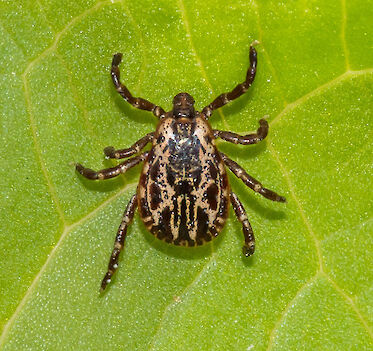Dispelling Myths, Understanding Illnesses, and Staying Safe in Tick Country
Welcome to Tick Talk, your comprehensive guide to understanding ticks, debunking myths, recognizing common illnesses, and staying safe in tick-prone regions like Oklahoma, Texas, Louisiana, and Arkansas. Ticks may be small, but they can pose significant health risks, transmitting various diseases that require vigilance and knowledge to combat effectively.
Dispelling Tick Myths:
Let's start by dispelling some common myths about ticks and their removal:
-
Tick Removal: Contrary to popular belief, never use heat, chemicals, nail polish, or petroleum jelly to remove ticks. Such methods can distress the tick, increasing the risk of disease transmission. Instead, gently use tweezers to grasp the tick as close to the skin as possible and pull it out steadily without twisting.
-
Tick Head: In many cases, parts of the tick's head may remain after removal. While they usually don't cause infection, they can be a local irritant. Simply wash the area and monitor for any changes. Larger remnants can be removed like a splinter.
-
Tick Testing: Avoid testing ticks for pathogens, as it can provide false reassurance and overlook potential symptoms of tick-borne illnesses. Prompt removal within 24 hours significantly reduces the risk of infection.
Common Tick-Borne Illnesses:
Ticks can transmit various diseases, including:
-
Rocky Mountain Spotted Fever (RMSF): Caused by Rickettsia rickettsii, RMSF is a severe illness characterized by fever, headache, and a distinctive rash. Early treatment with Doxycycline is crucial to prevent complications.
-
Lyme Disease: Named after Lyme, Connecticut, Lyme disease is caused by Borrelia burgdorferi. It presents with flu-like symptoms, erythema migrans rash, and can lead to serious complications if left untreated.
-
Ehrlichiosis: Caused by Ehrlichia bacteria, ehrlichiosis manifests with fever, headache, and muscle aches. Prompt treatment with Doxycycline is essential to prevent severe outcomes.
-
Tularemia: Tularemia, caused by Francisella tularensis, can be transmitted through tick bites or contact with infected animals. Symptoms include fever, headache, and swollen lymph nodes.
-
Anaplasmosis: Anaplasmosis, caused by Anaplasma phagocytophilum, presents with fever, chills, and muscle aches. Doxycycline is the recommended treatment.
Identifying Common Tick Species:
In the South Central United States, ticks like the American Dog Tick, Brown Dog Tick, and Lone Star Tick are prevalent. These species are known vectors for various tick-borne illnesses and require careful monitoring.
1. American Dog Tick (Dermacentor variabilis):
- Appearance: Adult American Dog Ticks are reddish-brown with white or gray markings on their backs. Females have a wider shield-shaped body compared to males.
- Habitat: Found in grassy, wooded areas, and along trails where mammals, particularly dogs, are abundant.
- Identification: Look for their distinctive coloration and shape, especially the shield-like structure on the back of females. They typically attach themselves to the head or neck region of their hosts.
2. Brown Dog Tick (Rhipicephalus sanguineus):
- Appearance: Brown Dog Ticks are reddish-brown with a streamlined body shape. They may appear more elongated when engorged with blood.
- Habitat: Commonly found in homes, kennels, and other indoor environments, particularly where dogs reside.
- Identification: Brown Dog Ticks can often be found clustered in areas frequented by dogs, such as bedding, carpets, or upholstered furniture. They are less commonly encountered outdoors.
3. Lone Star Tick (Amblyomma americanum):
- Appearance: Adult Lone Star Ticks are reddish-brown with a single white spot or "lone star" on the female's back. Males may have light streaks or lines along the edges of their bodies.
- Habitat: Found in wooded areas, grasslands, and along trails. Lone Star Ticks are particularly abundant in areas with dense vegetation and animal populations.
- Identification: Look for the distinctive white spot on the female's back, which gives this tick species its name. Lone Star Ticks are aggressive feeders and may be encountered in large numbers, especially during peak activity periods.
4. Blacklegged Tick (Ixodes scapularis):
- Appearance: Blacklegged Ticks are reddish-brown to black in color. Adults have a flattened oval shape, while nymphs are smaller and may appear more translucent.
- Habitat: Found in wooded and grassy areas, particularly where there is dense vegetation and wildlife.
- Identification: Blacklegged Ticks are notorious for transmitting Lyme disease. Look for their small size, especially nymphs, and their tendency to feed on the groin, armpits, and scalp areas. They may also be found on pets and clothing after outdoor activities.
5. Gulf Coast Tick (Amblyomma maculatum):
- Appearance: Gulf Coast Ticks are reddish-brown with white or yellow markings on the scutum (shield). Females have a rounded body shape, while males are more elongated.
- Habitat: Found in grassy areas, shrubs, and along coastal regions, particularly in the Gulf Coast states.
- Identification: Look for their distinct coloration and markings, especially the white or yellow spots on the scutum. Gulf Coast Ticks are often encountered in outdoor recreational areas and may attach to humans and pets.
Staying Safe:
To minimize the risk of tick bites and associated illnesses:
-
Wear Protective Clothing: When outdoors, wear long sleeves, pants tucked into socks, and use insect repellents containing DEET.
-
Perform Tick Checks: Ticks commonly attach to areas with thin skin and where clothing fits tightly, such as the scalp, behind the ears, neck, underarms, groin, and waistline. They also favor warm and moist regions like the back of knees and spaces between fingers and toes. Vigilant tick checks after outdoor activities are vital to promptly remove ticks and minimize the risk of tick-borne illnesses.
-
Seek Medical Attention: If you develop symptoms like fever, headache, or rash after a tick bite, seek medical attention promptly. Early diagnosis and treatment are crucial for preventing complications.
In conclusion, understanding ticks, debunking myths, and recognizing symptoms of tick-borne illnesses are essential for staying safe in tick-prone regions. By following preventive measures and seeking prompt medical care, you can enjoy the outdoors while minimizing the risk of tick-related health issues. Stay informed, stay vigilant, and stay safe!
